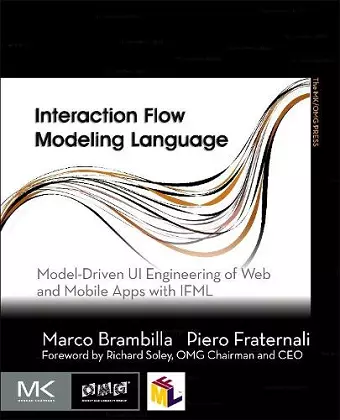Interaction Flow Modeling Language
Model-Driven UI Engineering of Web and Mobile Apps with IFML
Piero Fraternali author Marco Brambilla author
Format:Paperback
Publisher:Elsevier Science & Technology
Published:25th Nov '14
Currently unavailable, and unfortunately no date known when it will be back

This book is an essential introduction to the Interaction Flow Modeling Language, focusing on model-driven techniques for designing user interfaces in applications.
The book Interaction Flow Modeling Language offers a comprehensive guide to applying model-driven techniques in designing the user interfaces of software applications. It introduces readers to the innovative OMG standard known as the Interaction Flow Modeling Language (IFML). Authored by Marco Brambilla and Piero Fraternali, who are the creators of the IFML standard, this book aims to elucidate the core concepts of the language and its practical applications.
Throughout Interaction Flow Modeling Language, Brambilla and Fraternali effectively demonstrate how IFML can be utilized for the specification and implementation of intricate web and mobile applications. The book covers a wide range of topics, including the development of rich interactive interfaces, both browser-based and native, as well as client-side components and widgets. It also explores how to connect these components to data sources, business logic, and various services, providing readers with a thorough understanding of the landscape.
By adopting an agile model-driven approach, Interaction Flow Modeling Language presents unique insights into the advantages of engineering web and mobile applications. The authors employ intuitive examples derived from real-world scenarios to facilitate understanding, guiding readers from visual specifications of requirements through to design and code production. Drawing on over twenty years of experience, the book combines methodological principles with practical techniques that can be immediately applied in the field.
"...a timely attempt to add value to software engineering process modeling exercises with a specific emphasis on establishing uniformity of the interaction style and usability of the interface...very systematic in approaching the modeling exercise by defining its belief systems... and then binding all these for better user interfaces." --Computing Reviews
ISBN: 9780128001080
Dimensions: unknown
Weight: 870g
422 pages